In-vitro suppression of IL-6 and IL-8 release from human pulmonary epithelial cells by non-anticoagulant fraction of enoxaparin
- PMID: 25961885
- PMCID: PMC4427328
- DOI: 10.1371/journal.pone.0126763
In-vitro suppression of IL-6 and IL-8 release from human pulmonary epithelial cells by non-anticoagulant fraction of enoxaparin
Abstract
Background: Enoxaparin, a mixture of anticoagulant and non-anticoagulant fractions, is widely used as an anticoagulant agent. However, it is also reported to possess anti-inflammatory properties. Our study indicated that enoxaparin inhibits the release of IL-6 and IL-8 from A549 pulmonary epithelial cells. Their release causes extensive lung tissue damage. The use of enoxaparin as an anti-inflammatory agent is hampered due to the risk of bleeding associated with its anticoagulant fractions. Therefore, we aimed to identify the fraction responsible for the observed anti-inflammatory effect of enoxaparin and to determine the relationship between its structure and biological activities.
Methods: A549 pulmonary epithelial cells were pre-treated in the presence of enoxaparin and its fractions. The levels of IL-6 and IL-8 released from the trypsin-stimulated cells were measured by ELISA. The anticoagulant activity of the fraction responsible for the effect of enoxaparin was determined using an anti-factor-Xa assay. The fraction was structurally characterised using nuclear magnetic resonance. The fraction was 2-O, 6-O or N-desulfated to determine the position of sulfate groups required for the inhibition of interleukins. High-performance size-exclusion chromatography was performed to rule out that the observed effect was due to the interaction between the fraction and trypsin or interleukins.
Results: Enoxaparin (60 μg/mL) inhibited the release of IL-6 and IL-8 by >30%. The fraction responsible for this effect of enoxaparin was found to be a disaccharide composed of α-L-iduronic-acid and α-D-glucosamine-6-sulfate. It (15 μg/mL) inhibited the release of interleukins by >70%. The 6-O sulphate groups were responsible for its anti-inflammatory effect. The fraction did not bind to trypsin or interleukins, suggesting the effect was not due to an artefact of the experimental model.
Conclusion: The identified disaccharide has no anticoagulant activity and therefore eliminates the risk of bleeding associated with enoxaparin. Future in-vivo studies should be designed to validate findings of the current study.
Conflict of interest statement
Figures

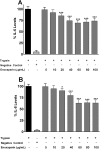
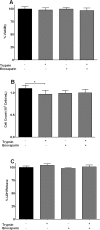
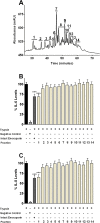

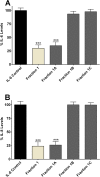




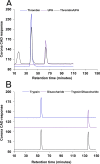
Similar articles
-
Non-Anticoagulant Fractions of Enoxaparin Suppress Inflammatory Cytokine Release from Peripheral Blood Mononuclear Cells of Allergic Asthmatic Individuals.PLoS One. 2015 Jun 5;10(6):e0128803. doi: 10.1371/journal.pone.0128803. eCollection 2015. PLoS One. 2015. PMID: 26046354 Free PMC article.
-
Opposing effects of low molecular weight heparins on the release of inflammatory cytokines from peripheral blood mononuclear cells of asthmatics.PLoS One. 2015 Mar 4;10(3):e0118798. doi: 10.1371/journal.pone.0118798. eCollection 2015. PLoS One. 2015. PMID: 25738575 Free PMC article.
-
Ion exchange chromatographic separation and isolation of oligosaccharides of intact low-molecular-weight heparin for the determination of their anticoagulant and anti-inflammatory properties.Anal Bioanal Chem. 2013 Jul;405(18):6043-52. doi: 10.1007/s00216-013-6996-9. Epub 2013 May 28. Anal Bioanal Chem. 2013. PMID: 23712644
-
Asthma drugs counter-regulate interleukin-8 release stimulated by sodium sulfite in an A549 cell line.J Asthma. 2009 Apr;46(3):238-43. doi: 10.1080/02770900802628508. J Asthma. 2009. PMID: 19373630
-
Therapeutic Potential of Enoxaparin in Lichen Planus: Exploring Reasons for Inconsistent Reports.Front Pharmacol. 2018 Jun 5;9:586. doi: 10.3389/fphar.2018.00586. eCollection 2018. Front Pharmacol. 2018. PMID: 29922163 Free PMC article. Review.
Cited by
-
Antithrombotic and Anti-Inflammatory Effects of Fondaparinux and Enoxaparin in Hospitalized COVID-19 Patients: The FONDENOXAVID Study.J Blood Med. 2021 Feb 11;12:69-75. doi: 10.2147/JBM.S285214. eCollection 2021. J Blood Med. 2021. PMID: 33603528 Free PMC article.
-
The Use of the Anticoagulant Heparin and Corticosteroid Dexamethasone as Prominent Treatments for COVID-19.Front Med (Lausanne). 2021 Apr 23;8:615333. doi: 10.3389/fmed.2021.615333. eCollection 2021. Front Med (Lausanne). 2021. PMID: 33968948 Free PMC article. Review.
-
Mechanisms of COVID-19 thrombosis in an inflammatory environment and new anticoagulant targets.Am J Transl Res. 2021 May 15;13(5):3925-3941. eCollection 2021. Am J Transl Res. 2021. PMID: 34149990 Free PMC article. Review.
-
COVID-19 and Hypercoagulability: A Review.Clin Appl Thromb Hemost. 2020 Jan-Dec;26:1076029620962853. doi: 10.1177/1076029620962853. Clin Appl Thromb Hemost. 2020. PMID: 33074732 Free PMC article. Review.
-
Digital Ischemia as an Initial Presentation in a COVID-19-Positive Patient Without Any Significant Respiratory Symptoms.Cureus. 2021 Mar 23;13(3):e14054. doi: 10.7759/cureus.14054. Cureus. 2021. PMID: 33898138 Free PMC article.
References
-
- Marini M, Vittori E, Hollemborg J, Mattoli S. Expression of the potent inflammatory cytokines, granulocyte-macrophage-colony-stimulating factor and interleukin-6 and interleukin-8, in bronchial epithelial cells of patients with asthma. J Allergy Clin Immunol. 1992;89: 1001–1009. - PubMed
MeSH terms
Substances
LinkOut - more resources
Full Text Sources
Other Literature Sources

